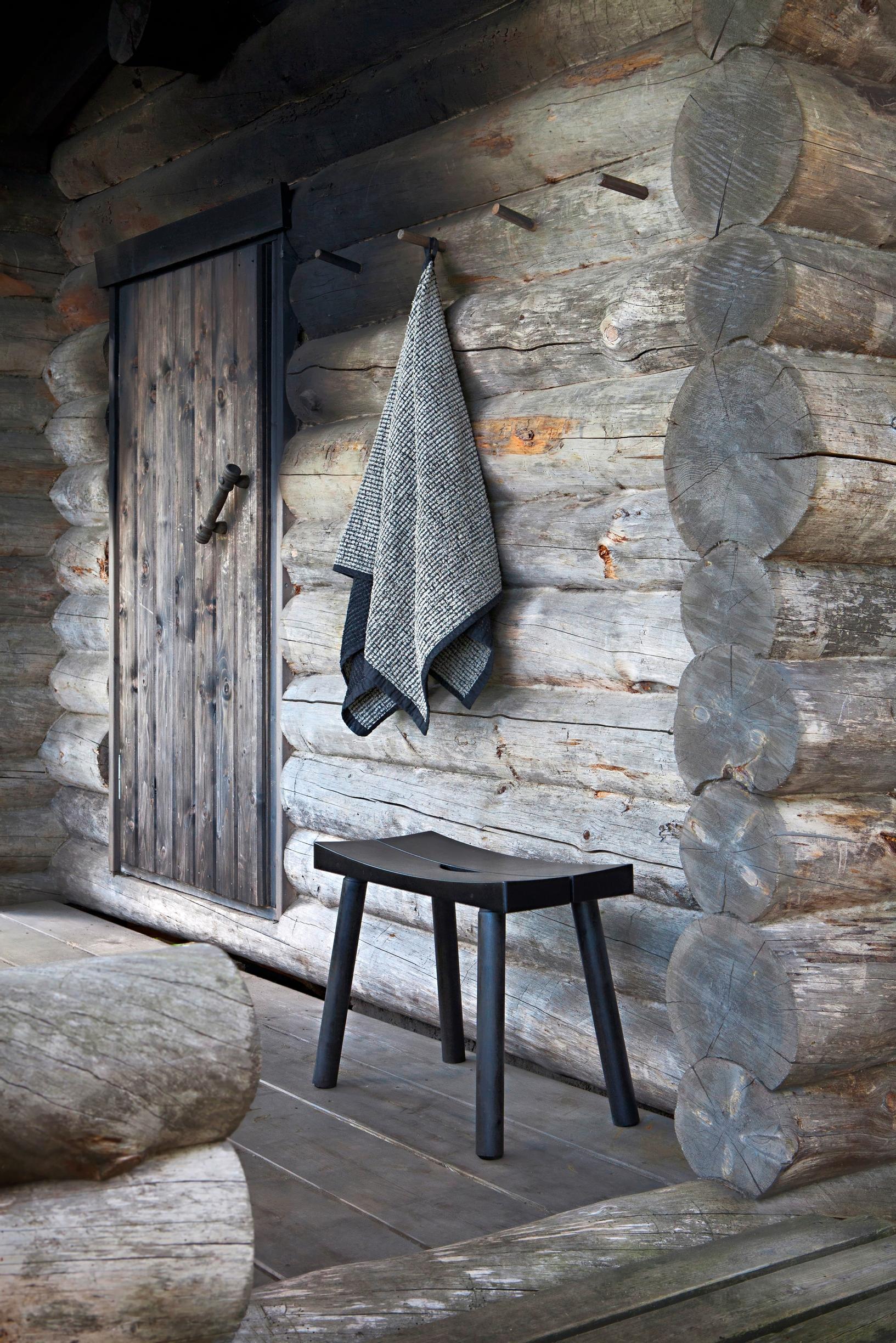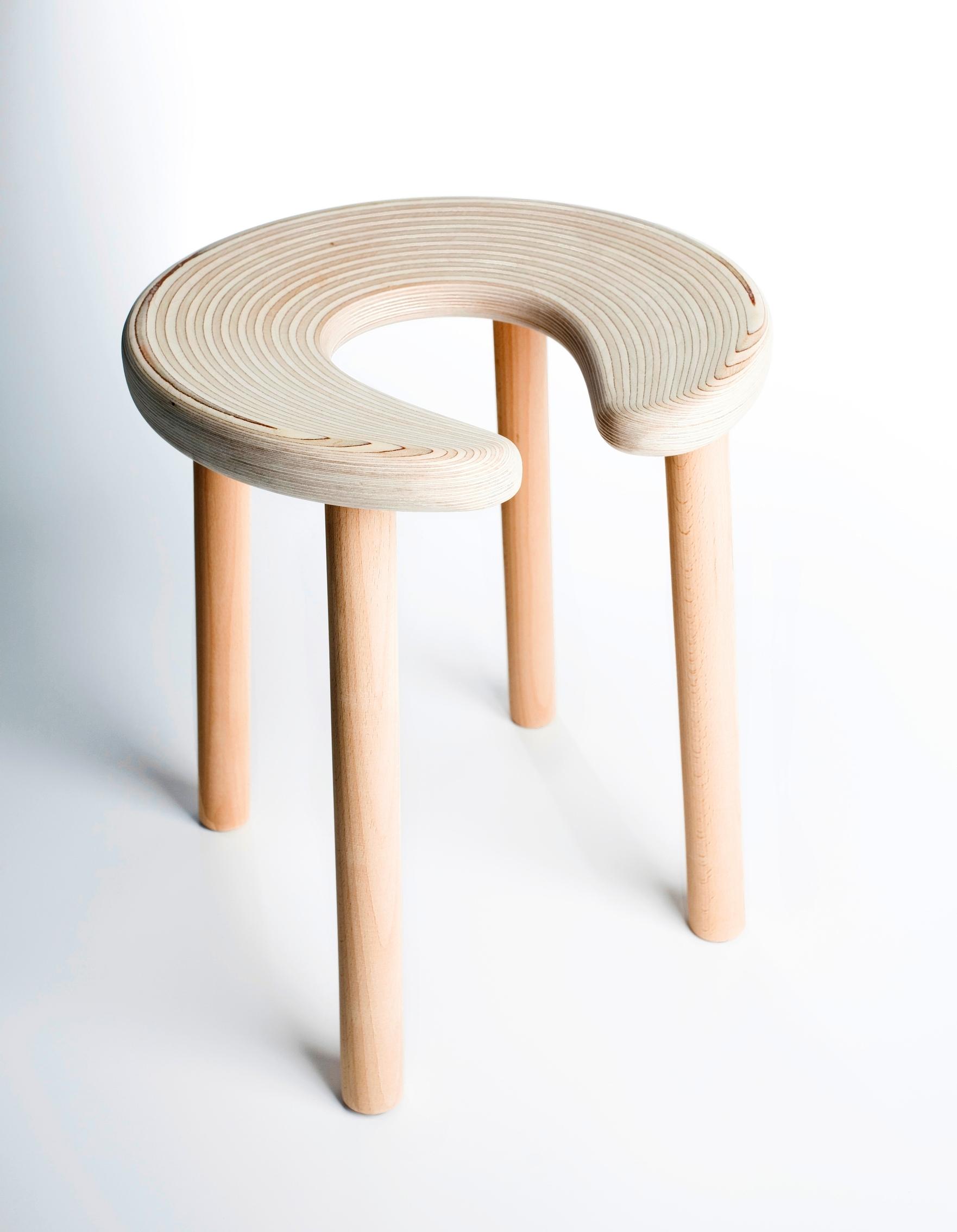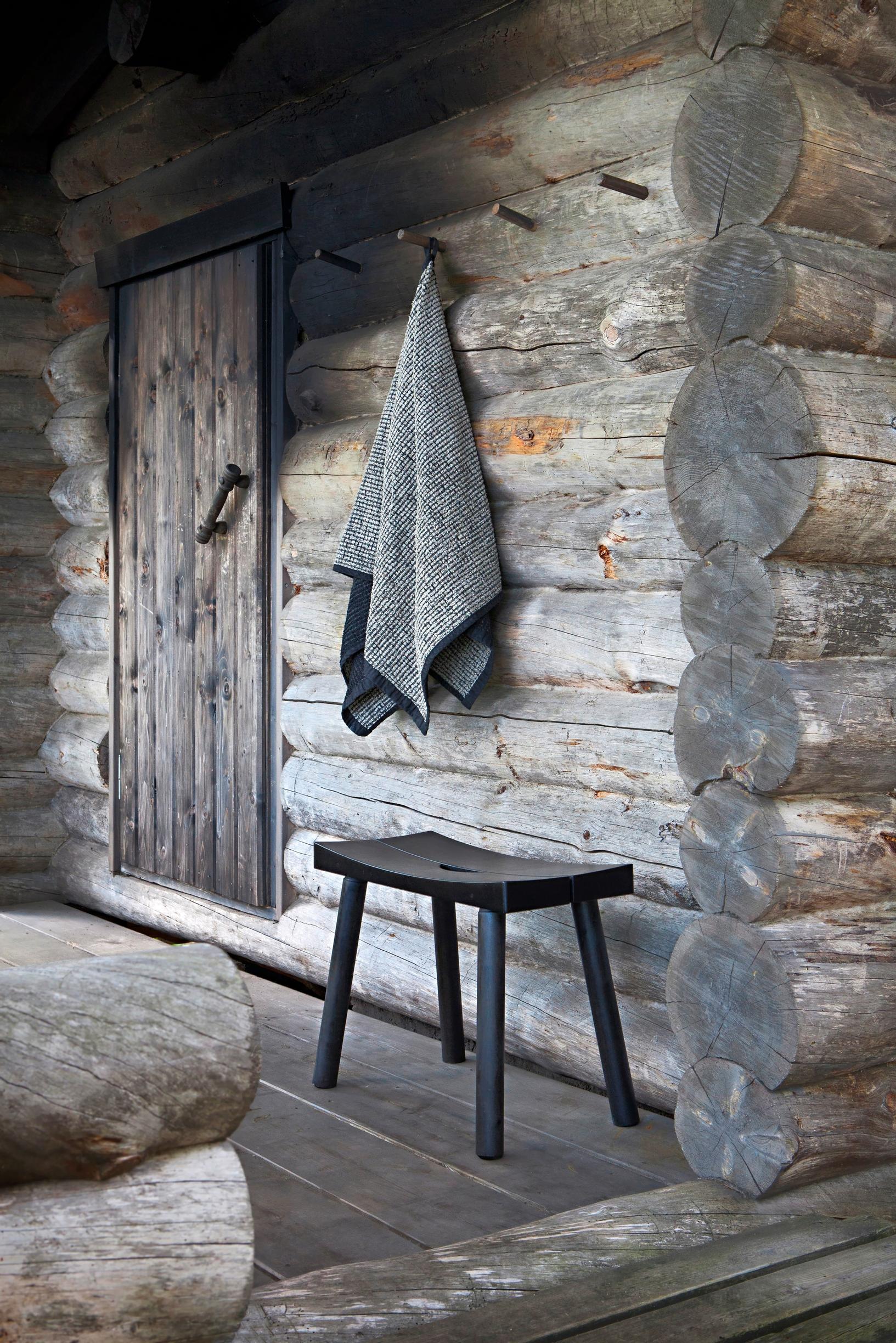
“Drying rack for people”—The story behind Finnish sauna stools
A sauna stool is a practical addition to sauna and washing routines. You can sit on it while scrubbing your back, cool off between sauna sessions, or take a peaceful break after having a sauna.
Finns have been enjoying saunas for over 10,000 years. The sauna has served as a place to bathe, an everyday multi-purpose space, and a stage for significant life events: people have given birth, smoked ham, laundered clothes, treated the sick, brewed beer, and washed the deceased in the dim glow of a smoke sauna.
The sauna building itself and its interior remained in its timeless, straightforward form for a long. The structure was made of logs, and fixed wooden benches were set high in the sauna’s warmth, using timber from nearby forests. Each builder measured and crafted the benches according to their individual needs.
In addition to fixed benches, the sauna needed movable furniture: long benches placed against the walls and separate stools where you could sit while washing your back or cooling off. Sauna stools were usually handcrafted from available lumber or from gnarled branches found in the forest.


Antti Nurmesniemi’s sauna stool is an icon of Finnish design.
Design entered the scene after the Second World War, when famous Finnish designer Antti Nurmesniemi designed one of the icons of Finnish design, a horseshoe-shaped sauna stool. Nurmesniemi was commissioned to design the interior for the sauna department of Hotel Palace, which was built for the 1952 Olympics, while working at Viljo Revell and Keijo Petäjä’s architectural office. Both Revell and Petäjä were renowned architects in Finland; Revell made a name for himself internationally, as well.
Nurmesniemi designed an extremely simple seat for the hotel facilities: a horseshoe-shaped stool with straight teak legs. Teak was chosen for its hardness and excellent moisture resistance, crucial for the frequently wet floors in shower and sauna areas.
Antti Nurmesniemi’s sauna stool has been characterized as a fusion of modern design and Finnish folk tradition, with some people likening it to traditional Finnish milking stools. However, Nurmesniemi emphasized that its shape arose purely from practical needs. In his view, the most important task of a sauna stool was to be a “drying rack for people,” and its form directly reflects this function.


Until the 1950s, the sauna remained a simple wooden space. However, a new material—plastic—began to appear in the sauna room after that. Plastic first replaced traditional materials in smaller items like soap dishes, sauna ladles, and buckets, eventually extending to larger objects like tubs and sauna stools.
One widely adopted stool model is Tauno Tarna’s ‘723’ stool, introduced in the 1970s by Sarvis, Finland's first manufacturer of plastic products. This angular plastic seat was produced in the popular colors of the time, such as blazing red, bright yellow, light pink, and brown.
Tarna embraced the functionalist ideals of his mentor, Kaj Franck, in his work. The stool’s form is minimalistic, and its flared legs allow multiple stools to be stacked on top of each other. There’s also a hole in the seat for easy transport. These same design solutions appear in Tarna’s ‘Katrilli’ tableware set, also created for Sarvis.
The tradition of well-designed sauna stools lives on. There are already great candidates for tomorrow’s classics, namely Nikari's stools: Johan Olin and Aamu Song’s ‘Culture’ or ‘Periferia’ by Kari Virtanen, which has already received the Kaj Franck Design Prize.
The need to cool off and wash your back isn’t going away anytime soon.


